
The Unionville Tavern – One of the Oldest Remaining Buildings in Ohio
I was recently given the opportunity to photograph one of the oldest buildings in Ohio – a stagecoach stop that once welcomed the likes of Thomas Edison, Henry Ford and many others who had rested or enjoyed a meal within its walls. The years of incredible history still resonate from each dusty barstool, tabletop and tunnel within this amazing place. The saying “if walls could talk” seems to stand out now more than ever among all of the places that I have photographed, and if this tavern could tell its life story, I’m sure it could conclude in the form of at least two novels. So where do I begin?

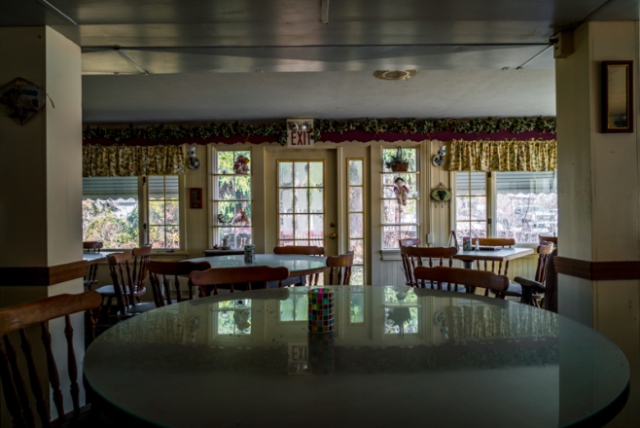
Over 200 years ago, during the antebellum era, two log cabins were built along what is now known as Route 84, previously known as the Cleveland-Buffalo Road. The year was 1798, and the first log cabin had been built. Ohio had not yet been admitted as a state; people still traveled dirt roads in their covered wagons and would frequent this historical structure while passing through. In 1805, an identical log cabin was built next to the original. Heavy traffic continued to travel this road, reaching a peak in 1818 as the road became a major thoroughfare – 15 years after Ohio had officially become the 17th registered state. With this steady rise in traffic leading to its expansion from two separate log cabins into one two-story inn, it would come to be welcomed as not only one of the first buildings of Ohio, but the state’s very first tavern.

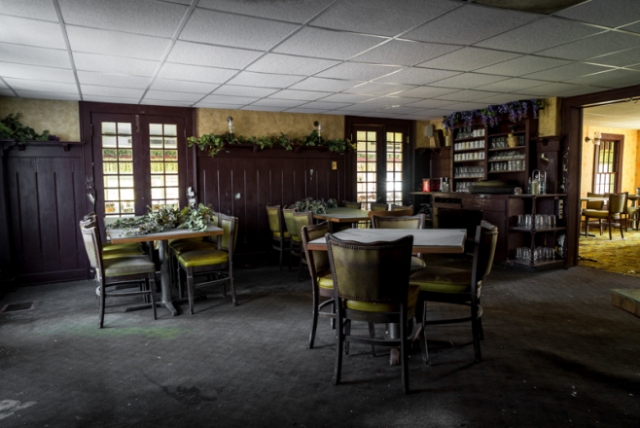
As we take a trip into the past, we find that this tavern was a main birthplace of the antebellum era, hosting many civil war era parties, complete with dances in the second story ballroom as slaves hurriedly emerged from the Underground Railroad seeking refuge and a full meal in rooms below, hoping to soon see a life of freedom. Fugitive slaves were housed, and given a temporary hideout inside the tavern until nightfall, when they would be moved, taken to Ellensburgh docks under dark of night to cross Lake Erie into Canada. Tunnels can be found leading from the Unionville Cemetery into the Tavern’s basement, but many pathways have now been blocked off.

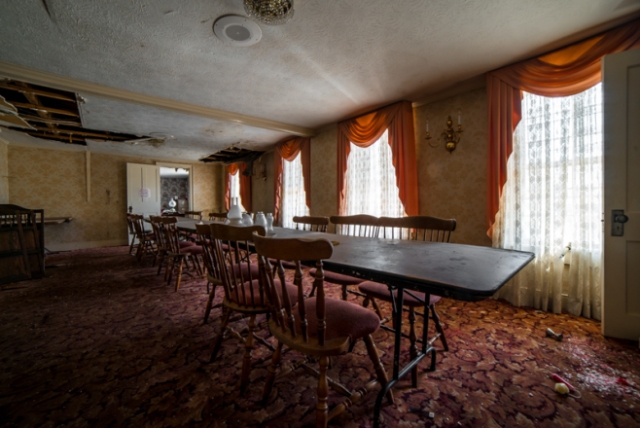
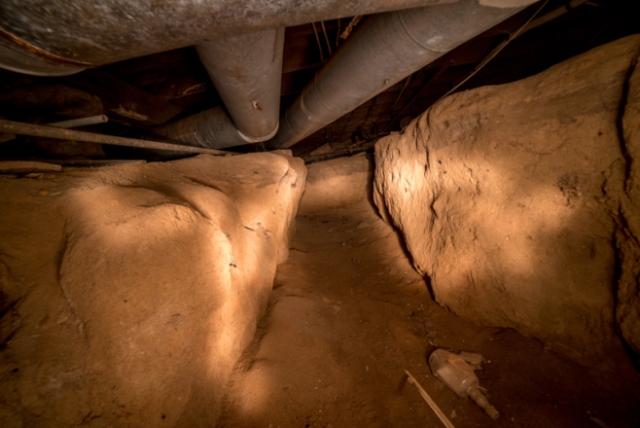

The tavern has cycled through various names over time during its many years as an active structure. First known as the Webster House, the tavern was not long after renamed to the New England House, until yet another name change years later that simply dubbed it “The Old Tavern.” Though the most current change had adopted the community’s name, which surrounded it, leaving it to be called the Unionville Tavern, almost all locals among many others still mainly refer to it, and know it as “The Old Tavern.” After some years in service, this building had become a mailstop, as well as a known stagecoach for people on route through town. A covered carriage entrance was added, as the tavern continued welcoming travelers and revelers alike for years to come.
During August of 1843, the tavern would witness quite a wild and historically significant event known as the “County Line Road Incident,” when two fugitive slave brothers, Lewis and Milton Clarke, had spoken at an antislavery rally at the tavern. A As slave owners became aware, they also became angrier, leading to Milton Clarke being chased down, captured and beaten. Local abolitionists and anti-slavery proponents fought strongly to release him, in the end succeeding. Some years later, a weary traveler known as Harriet Beecher Stowe dropped into this small town, stopping to rest up at the old tavern. During her stay, she had met Milton and Lewis, who told stories of the “County Line Road Incident,” and to this day many believe that George Harris, a character in her famous novel “Uncle Tom’s Cabin” was based on Lewis Clarke.
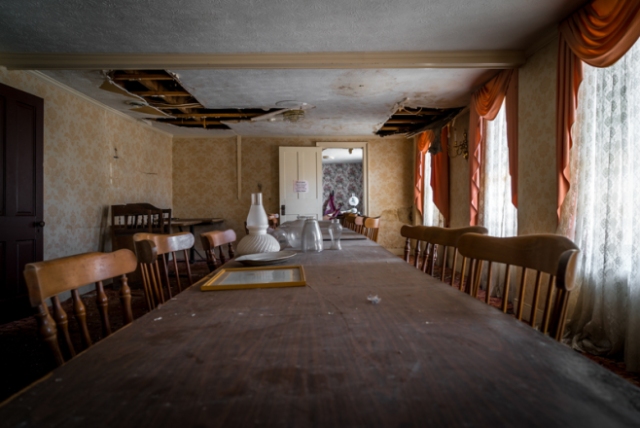
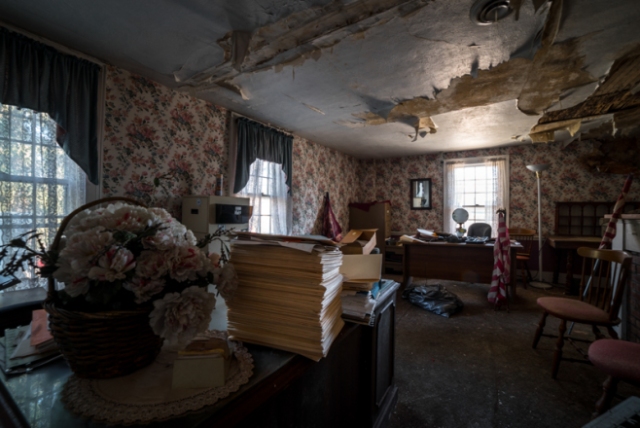
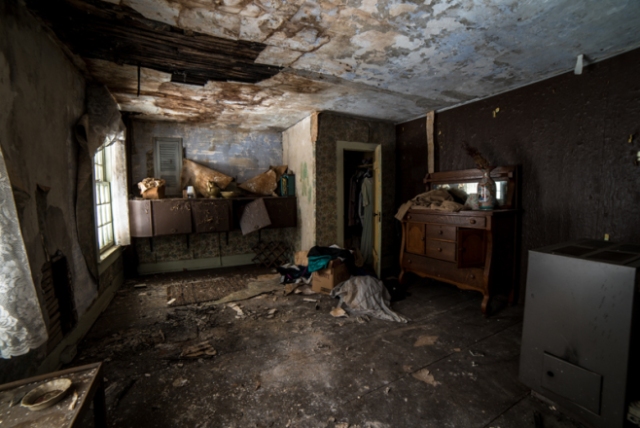
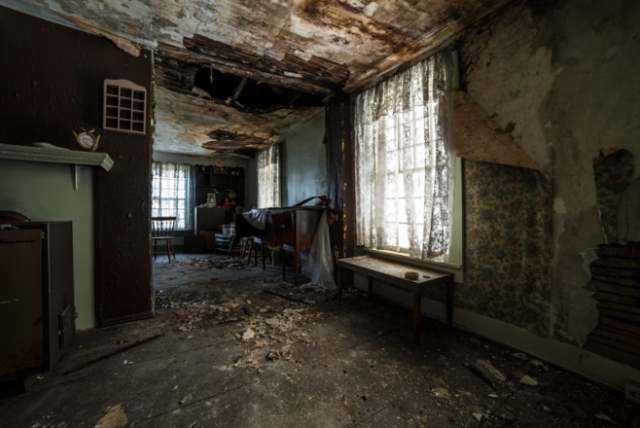
Though it remained an active stagecoach stop and mailstop for years, it was eventually closed in 1916, but reopened a decade later in 1926, continuing to operate as the tavern many knew and loved. Nearly 50 years later, the tavern was added to the national register of historic places in 1973. Years flew by as events were held; parties and dances continued to take place in the second story ballroom, while life remained loud and vivid inside and around. Liveliness grew in 1986, when a pub was added, leaving the tavern to function mainly as a bar and restaurant. It would be only two more decades from here when things would begin to look grim for this famous corner.
In 2006, the tavern held its final event – a Valentine’s Day meal, concluding the last known activity inside of its walls. Though locals were still partial to calling it “The Old Tavern” or even the Unionville Tavern, this event was held inside the tavern’s winery, which was then known as Phoenix 84. With the end of this dinner came the end of a beautiful structure and wonderful life, as the tavern’s doors were sadly shuttered for a second time. A calming silence now fills the air, while a very loud collection of history flutters among the dust in forms of muted stories, waiting to be heard by those with an interest to listen. Now, nine years later in 2015, a strong attempt is being made to bring new life to this important piece of Ohio’s past.

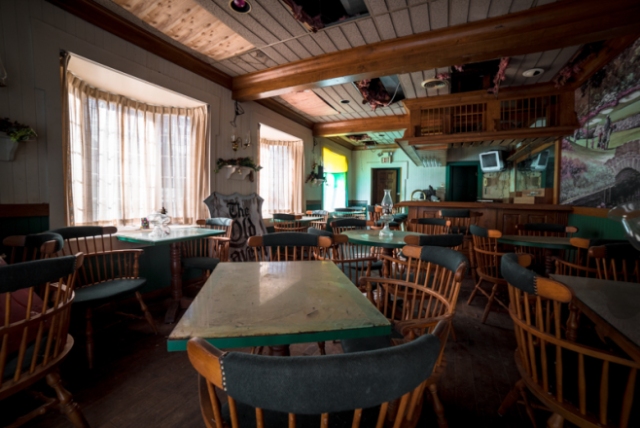
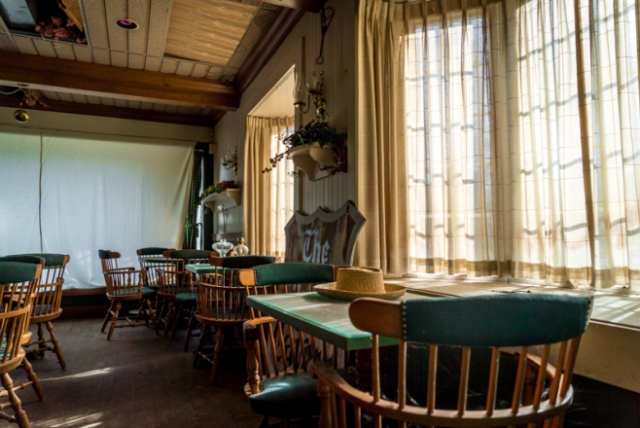
Strolling along the second story, I noticed some pieces from the original Inn peaking their way through holes in ceilings. Over years of closure, as time continues to pass, this structure sits face to face with Ohio’s continuously changing weather, victim to the constantly shifting elements. Wandering through quiet desolation inside of this magnificent piece of history, I’m immersed in not only its beauty, but also an entire wave of emotions that I believe most of the town surrounding must feel towards the significance of saving this tavern.
I’ve been given the amazing opportunity of working together with a wonderful preservation society, as an attempt is made to shed a brand new and brilliant light on the importance of saving this beautiful building. Hopes remain strong of sharing its legacy for years to come, bringing attention to the importance of why we must save this staple of Ohio’s history.
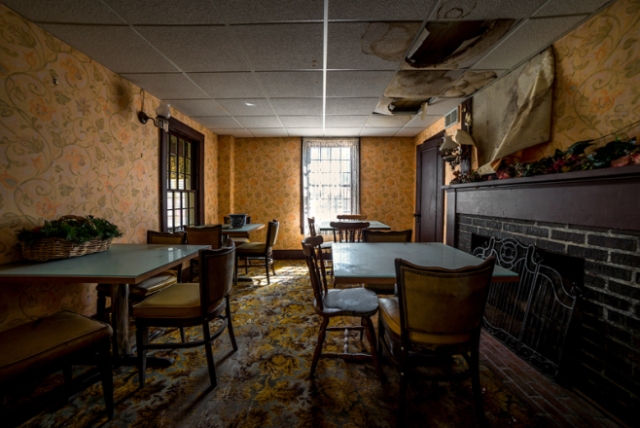
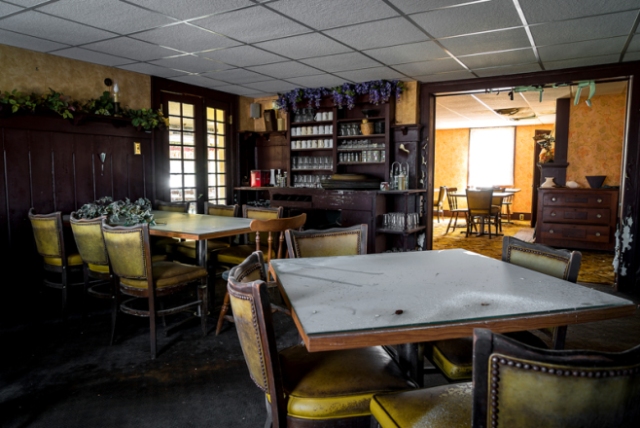







Who’s clothes were they in the cupboard? A good blog makes you ask questions. Love your work.
Good luck with saving this gem!
Thanks for share a piece of past
When it was open and made into a resteraunt my mother worked there and they had the best corn fritters with syrup. Would go there on a sunday afternoon for brunch .
I also worked there for a while. I have the corn fritter recipe! 🙂
I worked there too…I have some recipes. lol. We should make a cook book!
Ami would you be willing to share the recipe? Or can my dad come over your house enjoy them after you made a fresh batch? lol
Cough it up sister, lol!
Ahhhhhhhhhhh yesssss…I also remember those CORN FRITTERS…they were the BEST ON THE PLANET…we even had our bowling banquet there, up on the 2nd floor…What a BLESSING it to hear it will be REFURBISHED…Such a BEAUTIFUL LANDMARK…Hope it will THRIVE for MANY MANY MORE YEARS to come…GOD BLESS THOSE WHO ARE MAKING IT A REALITY!!
I’ve worked across the street from this grand old lady for nearly 40 years and can attest to the impact she has on our community….both during those good times and the recent bad times. I’m extremely encouraged by the efforts of the Unionville Tavern Preservation Society or as most people know them the Save the Tavern people. They’re mostly young, ambitious, idealistic, local men and women . Luckily they are young, seeing as how us older, perhaps wiser, seasoned citizens might balk at the thought of such an undertaking. God bless them and I sincerely hope that they get the needed help to complete this daunting endeavor.
Boy do these photos bring back memories. I was a waitress there many years ago. Sunday’s were all u could eat Prime Rib Buffets. Good food and the corn fritter crisp and fresh with maple syrup an a little confectionery sugar sprinkled on top..(yummy)’. And the ballroom, . Even the spirits who lived there. I could go on an on. Hope it is put back into shape. Stories I could tell..
Hope you will share more Tavern stories, Diana Butcher! I for one love the stories, and, as witnessed by other towns and resurrected icons, so do many others.
Diana I worked with you until you moved away at the Old Tavern! I was glad to see your name when I read this! It is a shame to see this once beautiful place in such a state
Oh the corn fritters! Many a family get together at this place. I remember going to see the tunnels as a child. Special memories
My Grandparents, Maynard and Nellie Craig, owned the Grocery store and ran the Post Office on the other corner. They lived upstairs. My mother, Janice Craig Dean worked there when she was young. One of my favorite things to do was to have lunch there with Grandma and Mom. They had a wonderful chicken salad. When discussing the Civil War in class, which is discussed often in Georgia, I show pictures of The Old Tavern and talk about its role in the Underground Railroad. I hope that they are able to save The Old Tavern. It would be a shame to let that piece of history fade away. Thank you for the pictures and article.
Rita Dean Mohrmann
I worked there as one of the busboys when I was a teenager, and helped out in the antique shop. The owners were Pete Gress and Harry Carver. Pete’s wife Audrey was one of the waitresses. Went back to visit a few years ago and was sad to see how the place had fallen into disrepair and neglect.
Hi Greg, there is a great group of people that are saving it. It’s a slow and expensive undertaking but well worth the effort.
I was married there in 2002, also had eaten there many times. The corn fritters were the best!
If you plan any fundraiser craft shows to bring in funds for restoration Please let me know. I would love to help.
The previous owner who let this Lake County Gem deteriate to such a sad sight ought to be ashamed of how he let it go when 8 years ago others wanted to purchase it. How can anyone be so cruel to such a historic icon! I hope can be saved and brought back to its former beauty. I remember the shrimp salad, the chicken ala king, corn fritters and house dressing not to mention the Tavern Burger which my kids grew up on.I remember the tour bus loads of people coming to eat at the Old Tavern. Just goes to show how greed and selfishness can destroy what was once so special for so many people.
Nancy,
Thanks for sharing the wonderful memories. I’m the son of the former owners who owned it for almost 30 years ( late 50’s to the late 1980’s ) . Still making many of the recipes . My brother , and sister and myself worked in the kitchen for years ,. I was 23 when I left there in 1981, after graduating from college. Loved the kitchen and the food . I’m amazed how much is left out in all the articles I’ve read on the Old Tavern over the past several years. Again, thanks for sharing some great memories! Greg
I worked at the Tavern when I was in highschool. Your mother and dad were very good to me, Greg, and I remember them fondly.
The family is fighting about whose going to fix it the town should claim it as emmit domain
The memories this place holds are endless. For myself, it was such a treat to go enjoy the good food, but the stories of the history & importance of this house were captivating. It is sad to see what has happened to it & I hope someday to go there with my children. Currently, I live in South Carilina, where the schools teach the children of “The War of Northern Aggression”. I try to remember the stories that I was told as a child of the risks and all the good that was done here. Such an important piece of History!
My mother, my father, my two sisters, my brother and my self worked there, great times!!
David,
Greg Gress nice to see you on here. How is life treating you. It’s been a lot of years! I’m 58 this year. Our kids our moving on and I’m dreaming about retirement ( on a daily basis by the way) ! Are you still in California ? Saw Julie and Wayne at my moms funeral several years ago. Both her and Pete are gone . Life is moving by fast. Hope all is well with you? G
Get that corn fritter recipe from “Ami” and sell corn fritters for a fund raiser. They sound like they were delicious and Im sure some money could be made with them. Every bit helps.
My grandfather was a painter and wallpaper hanger in the area for more than 50 years. He was the one to hang the wallpaper in the Old Tavern as well as paint during many remodels. After his death, I loved to visit the Old Tavern just to touch the wallpaper and see his handiwork. It was a way of being with him even though he wasn’t there anymore. While seeing the pictures of the disrepair of the tavern is heartbreaking, it was still a joy to see my grandfather peeking it at me again. Thank you!
Was your grandfather Mr. Dustman? I would watch him paint for hours, he taught me how to paint wood trim with oil paint. I use the same technique to this day. If it is Mr Dustman, he wallpappered a room in my home in Saybrook back in the early 1980s . You should be extremely proud of him, he was an excellent painter ! Your comment brought back a lot of great memories, thanks for sharing,. Greg
Thanks for posting such a wonderful story. Bruce & I have lived in Texas for 39 yrs. but still call Ohio home. When the Tavern was still open, and we were in Geneva for a visit, the Tavern was a must for lunch of chicken ala king and corn fritters. We pray The Old Tavern can be preserved!!
When I worked there, early one Sunday morning, I went into the basement for supplies we kept down there. In the bricked section that is shown in the photograph, something called my name. There were only two of us there and the other guy was on the on the third floor setting up for a banquet.
Prior to that, I had always felt the ghost stories were just part of the quaint charm of working there…I never really believed them. They were fun to discuss with customers who asked, but after that, I felt a bit differently.
We had our wedding reception in the ballroom in 1960 and several high school reunions after that. When I was a little girl, living on the County Line Road , I would read stories to the blind grandmother of one of the owners, (Ralph Trout) in the bridal suite where she lived. Currently we’re living in California, but each visit to Ohio included lunch at the Old Tavern. ** Mary Lou (Hribar) ELLARS
I had my wedding reception there in 1961. Moved to NY, now in Ga . I went to school in the old school house 7th grade in 50s. Wonderful memories. Graduated n 1956…
If thoses green chairs ever go up for sale sign me up for 6!!!
When I started working there in the early 60’s, dinner consisted of an appetizer (sherbert in pineapple juice was a staple), soup, entree with potatoes, (the swiss steak was delicious), vegetable, corn fritter and desert (ice cream cake roll and pecan pie were a big hit), plus rolls and a “relish boat”. Harry Carver and Pete Gress were the owners and Audrey, Pete’s wife was the best waitress ever. Loved working there!! I met my husband at the Tavern. He came in for lunch and as they say the rest is history. While working there, the gas company was putting in new lines south on County Line Road. They followed a little bit of the underground railroad path. (Loved hearing the name “Craig” ! Grew up in Unionville behind the store when it was on the northeast corner of 84 and County Line Road. The post office was inside the store, too.) Thanks for taking care of the Tavern.
We had our wedding reception in the ballroom in 1960 and several high school reunions after that. When I was a little girl, living on the County Line Road , I would read stories to the blind grandmother of one of the owners, (Ralph Trout) in the bridal suite where she lived. Currently we’re living in California, but each visit to Ohio included lunch at the Old Tavern
I have special memories tof the tavern. When I worked at the Geneva Free Press in the sixties, we used to eat at the tavern. I live in Arizona now but still have vived recollections of going there and marveling at the role it played during that trying time of history. Good luck in your efforts to save this wonderful place.
I know mom and dad and my Ed and I went there on anniversary’s. I grew up just 6 miles and still live from this land mark, What a beautiful building it once was. I want to cry upon viewing the tragic mess it is in now, Old Tavern and the other older homes from the 1800’s have always been Unionville’s trade mark.
Thank you for bringing this tragic loss of a historical landscape. As children we called it the slave escape house. Some of us believed there were ghosts in the walls and they roamed at night. (of course) What a walk down memory lane
My wife Jean and I were married in the gazebo in 1988 and we had our reception in the banquet room where they used to have the buffets set up. Have eaten there more times than I can count and was heart broken when it closed. My second cousin Ruth was a waitress there for many years. I also remember taking a field trip with the eighth grade class at Assumption School in Geneva to see the tunnels and the cemetery. Miss the corn fritters!
My husband and I announced our wedding plans while having an Anniversary party there for his parents. We would continue to go there for dinners and take our kids there for the corn fritters in syrup!
We had business lunches, Family dinners,lunches, and many good times. Many stories were told sitting there.Nice memory.
I live in S C now but was just in Ohio last week. We drove by and I couldn’t recognize the Tavern. I grew up in Ohio and have eaten there many times. I too saw the tunnels on a field trip. I had a wonderful diner date there when I was in Madison Memorial High School. The school is gone now along with Homer Nash Kimball. So many good memories! I sincerely hope the Tavern can be saved. Thank you for the article and the pictures. I intend to save it.
Like so many of you, the Tavern was a significant part of our family’s life during my childhood years…wedding rehearsal dinners, anniversaries, birthdays, welcome home dinners, special occasions of every kind…each and every one revolved around special times in this Grand Old Girl. I joined the ‘Save the Tavern’ members group a while back…I don’t live close enough to volunteer much, but I send all best wishes for their vital and honorable efforts, and hope that I can continue to contribute in some small way.
Used to love to go there for dinner… Omg the corn fritters were almost worth the trip! I’d love to have the recipe if Am I decides to share, or if you decide to do a cookbook as a fund raiser, let me know!
I cannot vouch for the authenticity of this, but it is billed as the Unionville Tavern Corn Fritter recipe: http://www.tasteofhome.com/recipes/old-tavern-corn-fritters
Thank you for sharing this story Johnny Joo, and thank you to everyone for the great stories! Also…thank you Kristen Jones for the corn fritter recipe! 🙂
I was born in a Painesville hospital in 1941 and taken to my Grandparents residence, “The Old Tavern”, directly from the hospital. Spending every Summer there till they, Arther & Hulda Fritz,sold it. Many family events have taken place there. My mother and father were married in the Rose Garden ( 8 Aug. 1933).The original corn fritter receipt was grandma Hulda’s, which I even enjoy today. Oh, so many wonderful memories. So sad a condition, my heart aches seeing the pictures. My original, wrought iron, baby crib will be returned, when the nursery is finished. Numerous other items have been well cared for and will be returned for all to enjoy. A special thanks to Erin and her support team for all they are doing
I was hoping to make a road trip to experience this historical place after reading the recipe for Old Tavern Corn Fritters in the 1999 Taste of Home recipe book. Hope it can be revived.
My mom, Amy Rutter Marple, was born in Madison, and grew up on a farm called Park Inn. She could not afford to eat at this restaurant on regular basis as a child but did attend some special events there. As a family from Florida, visiting this area, we ate there years back before it closed. My mom, Amy, is visiting this landmark in October and is glad that eventually this beautiful landmark will come a live again!
I remember the best stuffed pork chops along with the corn fritters…not to mention the swiss steak. It was a wonderful place.
I wish I could have tried all of this food!
I am now 72 years old. My dad was born in 1909 in Ashtabula, and my Mother was born in Euclid. I was born in Cincinnati in 1943. That was because my Mother found work there at Wright Aeronautical as a drill press operator. My Dad enlisted in the Navy in 1941 and became a Seabee. In 1950, we moved to a house on Rt. 20 in Geneva. Then Dad built a new house on Rt. 528 in Madison where we lived until 1956 when we moved to Palm Bay Florida. During the time we lived there, we made many trips from there to Ashtabula to go to church and visit my grandparents via Route 84. I can’t count the many times we drove by the Unionville Tavern, and every time, I was in awe of it’s beauty and size. I didn’t understand what the “underground railroad” was and imagined trains going underground! We ate there several times for birthday celebrations. I am so happy to see the effort being given to restore this extremely important and iconic structure.
We’ve past there for 45 autumns, travelling from Cleveland to Geneva for Apple picking. So glad you’re restoring that historic gem..
Thank you Johnny for capturing these photos. I have fond memories of my Mom bringing me to eat at The Old Tavern and always ordering the corn fritters. I haven’t been back since she passed away suddenly in 2004. I had hoped to make those same memories with my daughter but they had closed right after she was born. Hopefully I will be able to take her there in the near future after the renovations are complete.
My husband and I lived just west of the Tavern in one of the two ranch houses in Unionville. Raised a daughter and had lots of great neighbors. So glad someone is taking on this project. Please make an effort to add all these comments onto the history information gathered in 1998 for the Bicentennial. We relocated to Arizona in 2006, but Unionville is still “home”. Unionville was a great neighborhood to raise a family. The kids could run around the block and never cross a street. The Flea Markets were a lot of work, but we always made a few extra dollars. Recognized a lot of familiar names in the comment section, so there are a lot of us hoping this project is completed.